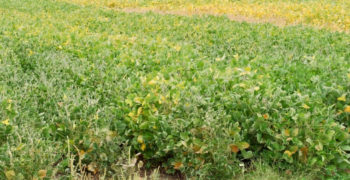Duration:
Floods that only last a couple of days are less damaging than the flooding that can last up to weeks if not longer. If the field isn’t flooded within 48 hour or less, producers have discovered minimum to no impact on yield loss. If the floods continue for four days or more, producers begin to see a delay in the plant’s growth, fewer nodes, and an overall shorter plant. Any flooding that continues longer than this results in total stand loss.
Temperature:
Temperature during the flood plays a major role in determining the outcome of the soybeans health. If the temperature is much warmer, this will cause the plant to rapidly delete all of its stored energy. Soil microbes and plants respire at higher rates when the temperature is warmer. While doing this, the plant quickly deletes oxygen within the water and begins creating more Co2. If a soybean plant plans on surviving the flooding, it needs a recipe that contains cool, cloudy days, and clear nights in order to survive while being submerged
Soil Type and Field Drying:
Producers will find greater yield reductions in soils containing more clay than silt loam soils for the same amount of time. If the plant is at is V4 stage, researchers have discovered 1.8 bu per acre loss on clay soil and .08 bu per acre loss on silt loam soil.
Effects:
3 main effects you will see within a soybean after flooding is N deficiency, Root diseases and other nutrient imbalances. Wet and flooded soils are a great recipe for soilborne pathogens such as Pythian. This is known to cause the most damage to soybean seedlings or begin early infections in the crop that can eventually kill the plant later in the season
What to do?
Flooding is impossible to prevent. However, cultivating your fields minimizes moisture staying in the soil longer than needed and increases aeration throughout your soil
Stress – Flooding has abilities to cause many physical injuries within the soybean crop and can even cause anaerobic stress conditions. This results in poor vegetative growth within the soybean crop and reduces its photosynthesis activity and minimizes nodulation. Flooding can also disrupt genes and proteins within the seed that assist in flood tolerance.



